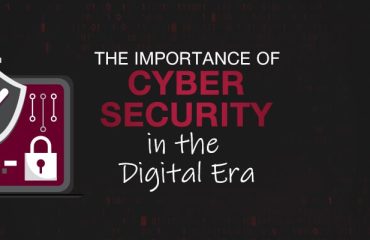
It is estimated that over 80% of cyberattacks involve the human element, including social engineering attacks, errors, and the misuse of stolen credentials. Cyber threats are on the rise, making cybersecurity awareness critical for keeping your business and company safe online.
What does “cyber security awareness” mean?
Cyber security awareness is knowing what security threats exist and taking appropriate measures to avoid them. and this involves educating and training employees about the threats lurking in cyberspace, how to prevent such threats, and what to do in the event of a security breach.
Being aware of cyber security threats, cybersecurity practices, the dangers of clicking on malicious links or downloading malicious attachments, interacting online, and disclosing sensitive information are all part of cybersecurity awareness. Your organization can become more resilient by strengthening its security posture and tightening its processes through security awareness training.
Why is cyber security awareness so important?
It is still common for organizations to suffer security breaches despite having best-in-class defense systems and measures in place. It is unfortunate that human error has often been the cause of many data breaches. As a result, cyber security awareness is very important.
By educating your employees about cyber security awareness, you help them understand how cybercriminals work, how they can be easy targets, how to spot potential threats, and what they can do to avoid falling victim.
Neglecting or failing to conduct cyber security awareness training can have serious consequences for your business, including legal penalties, financial loss, reputational damage, and loss of customer trust.
What should be included in cyber security awareness training?
The scope of cyber security awareness programs may vary depending on the number of employees and how aware they are.
The following are the top content items to include:
Phishing and social engineering
The human element is the primary gateway for cyberattacks. Human behavior and emotions can be exploited by social engineering attackers to influence their targets to take desired actions. Sharing credentials, granting system access, and disclosing sensitive information are examples. With the right training and skills, your employees can spot warning signs and reduce their chances of falling victim to these scams.
Malware and ransomware
Phishing emails are used as an entry point for malware, such as ransomware. Training in cyber security awareness will help employees understand how these attacks are carried out, the tactics threat actors use, and what they can do in response.
Email security
Email is one of the most important communication tools for businesses today. Cybercrime can also enter through this channel, including phishing, ransomware, and malware. Email security training will help employees be mindful of unsafe links and attachments.
Browser security
Hackers target web browsers since they are gateways to the internet and hold large amounts of sensitive data, including personal information. There are some websites that are not safe to visit online.
Password security
Today’s threat-laden environment makes it crucial to have a strong password. Password management and password best practices should be incorporated into security awareness programs, including how to create strong passwords. To prevent account compromises, your employees should also use multifactor authentication (MFA).
Information security
The most valuable asset of your organization is its information. It is everyone’s responsibility to protect its confidentiality, integrity, and availability. Protect sensitive information by training your employees on how to handle, share, store, and dispose of it safely.
Challenges of cyber-awareness
The importance of cybersecurity awareness in mitigating potential risks has become apparent to businesses today, despite the fact that it cannot solve cybercrime. The majority of companies provide security awareness training to their employees. In spite of this, the statistics of successful data breaches in recent years suggest that cyber awareness still needs to be improved. We live in a digital world where cyber security awareness is essential.
New attack methods are constantly being developed by cybercriminals. Updating training programs and keeping up with new trends can be challenging. As a result, cybersecurity training materials become rapidly outdated because today’s skills and knowledge may not be applicable tomorrow.



